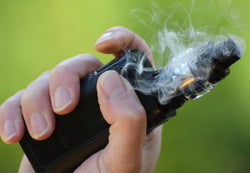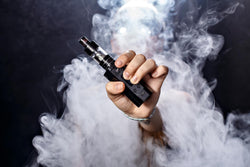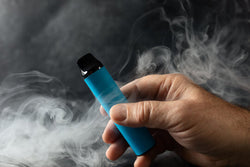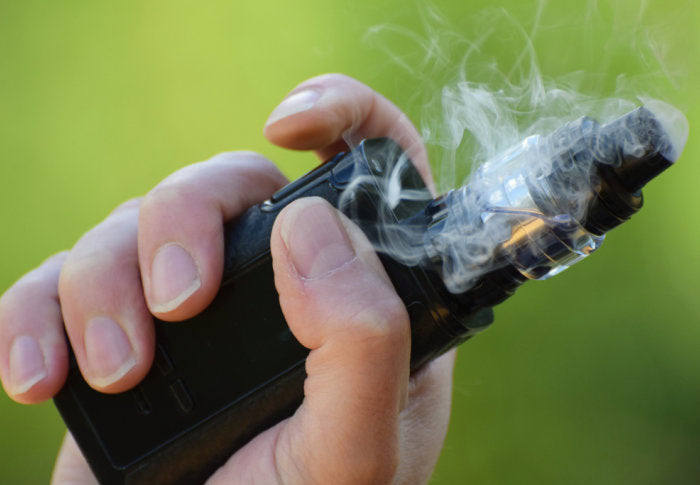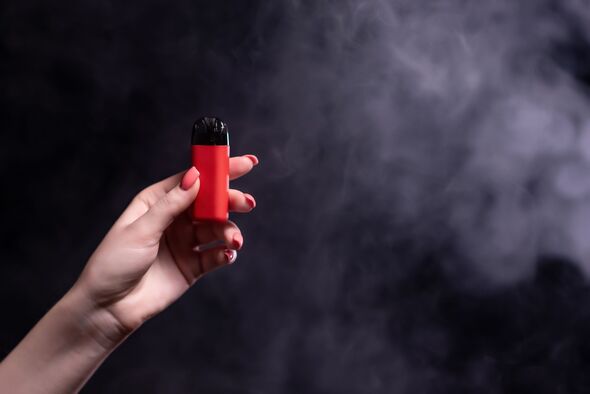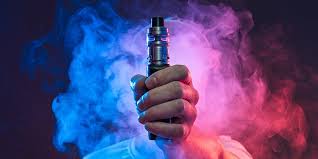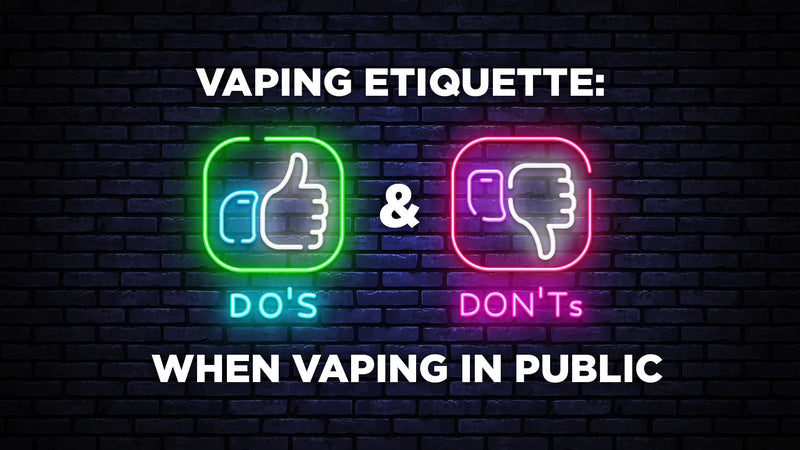

Cloud-chasing is not a bad thing. I like to exhale a satisfying amount of vapour, like most vapers do. But you won't catch me competing in a cloud competition with a build made of a billion coils and a mod the size of a brick. Finding a setup that produces vibrant, strong flavor is the main quality that vapers like me are seeking for. Big clouds aren't particularly important.The issue is that chasing clouds is currently the more popular objective. There are many tutorials on how to produce excessive volumes of vapour, but very few on how to get the optimum flavor from your e-juice.So, how can you maximize the flavor of your electronic cigarette? What advice would you have for people who are looking for flavor?
The best temperature and power settings for flavor
- The simplest approach to enhance the flavor of your e-liquid is to adjust your settings.
- Juices have distinct components that release at various temperatures. This is due to the fact that different flavors vaporize at various temperatures, and your coil's resistance along with your setting will decide how hot it gets. This is the main advantage of using a variable voltage/variable wattage gadget for flavor hunters.
- The best recommendation is to begin with lower settings and increase them until you find the "sweet spot." You'll need to experiment with each flavor because each e-liquid has a different sweet spot. At 20W, one juice might sparkle, while at 35W, another might really shine.
- But when it comes down to it, the most important thing to consider is the coil's temperature. The highest temperature your coil may reach is restricted by temperature control devices which makes them ideal for flavor-chasing.
- using temperature control simpler. For instance, with intelligent temperature control, you may set the desired temperature and the appliance would take care of the rest of the settings.
- Starting low and adjusting upwards as necessary is the same procedure for finding the ideal setting, but the end result is a vape that is consistently flavorful.
Cut back on the airflow
- Large airflow is a significant consideration for cloud chasers. The amount of air passing through your coil causes the vapour to become less dense but billow out to form enormous clouds. The drawback of this is that flavor is also diminished.
- Closing down the airflow is the best strategy for flavor chasers. As a result, the vapor is denser, warmer, and far more flavorful. Atomizers with adjustable airflow systems make this simple to accomplish.
- But finding the ideal mix is crucial. Poor vapour generation and maybe overly-hot vapour will result from an airflow that is too tightly closed off. Start low and go to higher airflow levels, just like you would with the power setting, until you find the perfect balance for you.
- There is also a little more to think about in this situation. The throat hit can become harsher if the airflow is cut off from an atomizer head with a wide bore (a large diameter), and the same is true for rebuildable atomizers with a large chamber. The best recommendation is to match the constrained airflow by using smaller bore coils and chambers whenever possible.
Pick Your Coil Wisely
- How much flavor your e-cigarette has depends greatly on the type of coil you select. Although individual taste is very important, there are some general guidelines that might help you acquire the optimum flavor.
- Nowadays, pod-style e-cigarettes are the devices that are most user-friendly for beginners. As with pretty much any e-cigarette, the quality of the flavor you experience depends on the particular device and its coil, but generally speaking, if you want the most flavor possible, pods still aren't the best option. However, a "generic" pod system will fall short slightly. There are several outstanding pod systems that provide flavor more in line with a more sophisticated gadget.
- Sub-ohm tanks are the next improvement in performance overall. These tanks can accommodate coils with a resistance of less than one ohm.
- The HorizonTech Falcon II is an excellent illustration of this. These significantly increase vapour production and flavor when used with lower resistance coils, and in some situations, the flavor may even be better.
Relevance of Wicking and Coil Materials
- The type of wick you use can significantly affect the flavor you get. The standard for e-cigarette wicks used to be silica, but they dilute the flavor of your e-liquid. That is one of the reasons cotton has replaced other wicking materials as the preferred option for vapers.
- The standard option for cotton wicks used to be organic cotton balls, but nowadays there are a lot more options. Today,organic cotton is the most frequently suggested. It is available in square sheets and many clearomizer coils already include it. You get a really pure flavor from your juice, and it also has amazing wicking abilities.
- But not everyone will enjoy this. There are also ardent fans of other options like "Cotton Bacon" and cellucotton. Ceramic wicks are also making a comeback. They not only generate fantastic flavor that some vapers swear by but are also heat resistant (thus they typically last longer).
- Explore your alternatives, but in general, any premium cotton or a contemporary ceramic wick will provide you with excellent flavor.
Consider VG:PG Ratios
- Over time, the majority of vapers come to favor the VG:PG ratio of their juices. High-VG juices are typically preferred by cloud-chasers because they produce thicker vapour and larger clouds. Things become a little more challenging, though, if flavor is your top priority.
- In previous years, it was frequently suggested that switching to higher-PG liquids would improve flavor. This is due to the fact that VG gives your juice a slight flavor, whilst PG doesn't. It makes sense, and that's also the reason why PG rather than VG is utilized as a transporter for food flavorings. However, getting a flavorful vape involves more factors than this.
- The generation of vapour is enhanced by VG, and the more vapour you produce, the more flavorings are vaporized and the more of the desired flavor is perceived. As a result, both PG and VG have advantages, and the ideal flavor relies much on your device and personal preferences.
- You don't need a lot of PG in the mixture to get outstanding flavor in sub ohm tanks, rebuildables, or other devices that emit a lot of vapour. In recent years, a 70:30 VG to PG ratio has established itself as the de facto industry standard. For the ranges, for instance, this ratio was selected. Many lines also increase the VG content to 80%, such as the Double Drip selections, although this shifts the balance a little further in favor of vapour generation.
- Avoid Vaping Tongue
- Your flavor experience includes more than just your setup. The largest issue you might run into as the other component of the equation is "vaper's tongue." This can be brought on by a variety of factors, but it's easiest to grasp as a form of "flavor fatigue." After prolonged use, the flavor of your juice seems to lose some of its intensity, and you can find it difficult to enjoy other juices with a similar flavor.
- The most straightforward remedy to this issue is to try a different flavor. In order to cleanse your palate and combat vaper's tongue, you can also smell freshly roasted coffee beans, sip water, or even suck a lemon.
Take Care of Your Vape Juice
- The e-liquid you're using itself can also be at fault. It's crucial to store your e-liquid properly because improper storage might cause the flavorings to deteriorate. To maintain the best quality, keep your juices away from heat, light, and as little open air as possible.
- Some vape liquids profit from "steeping" as well. Allowing your juice to age can really bring forth flavor notes, similar to how wine ages with time and increases in flavor. There are numerous methods for steeping, but they all share the same two components. The majority of steeping processes entail periodically shaking the bottle while the juice is kept in a cool, dark environment. The other main idea is to open the cap and let your juice to "breathe" (for brief periods of time)


